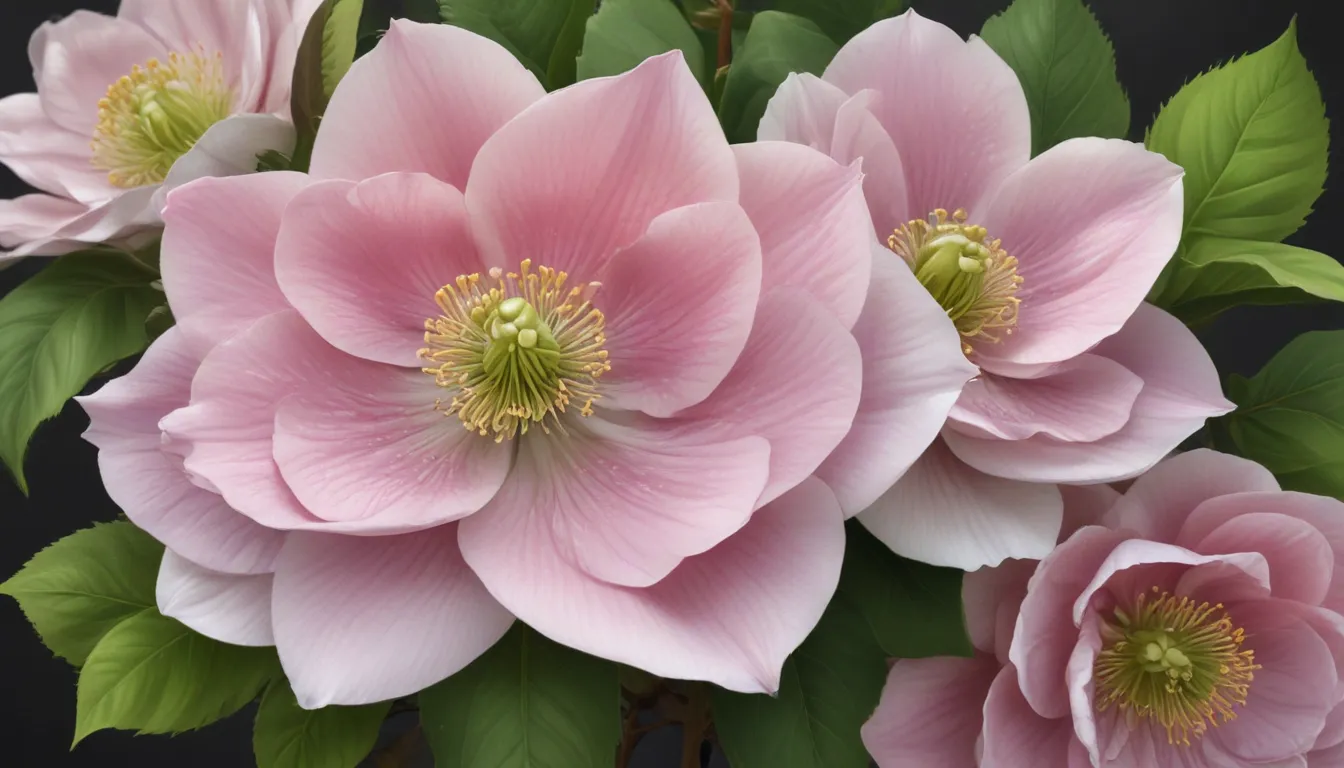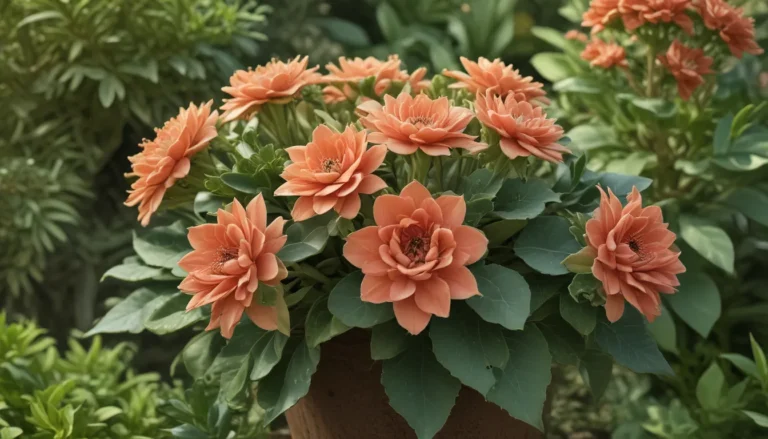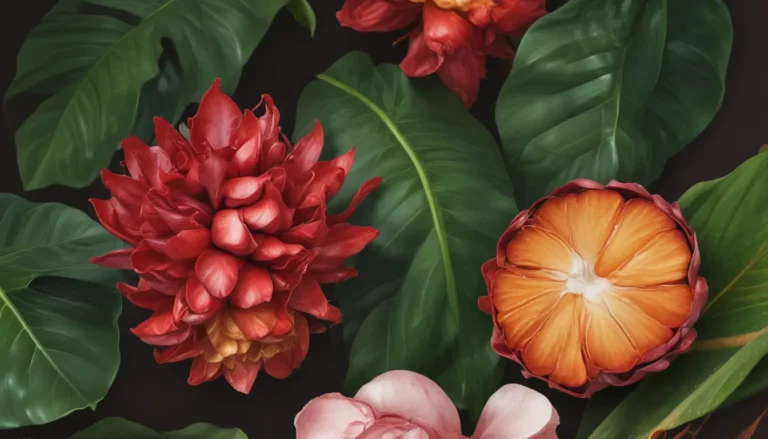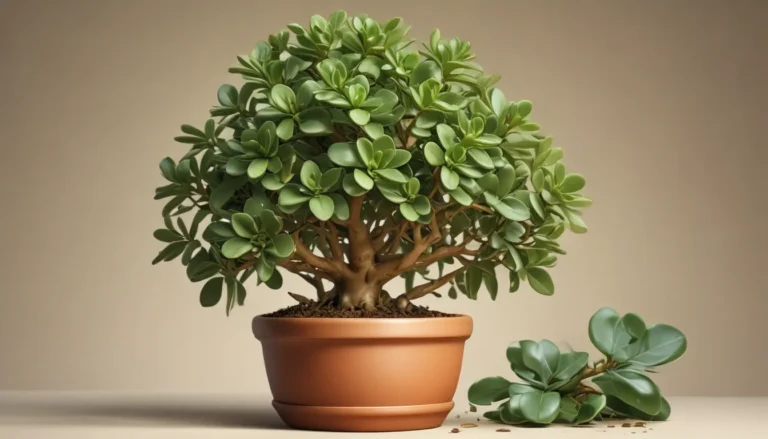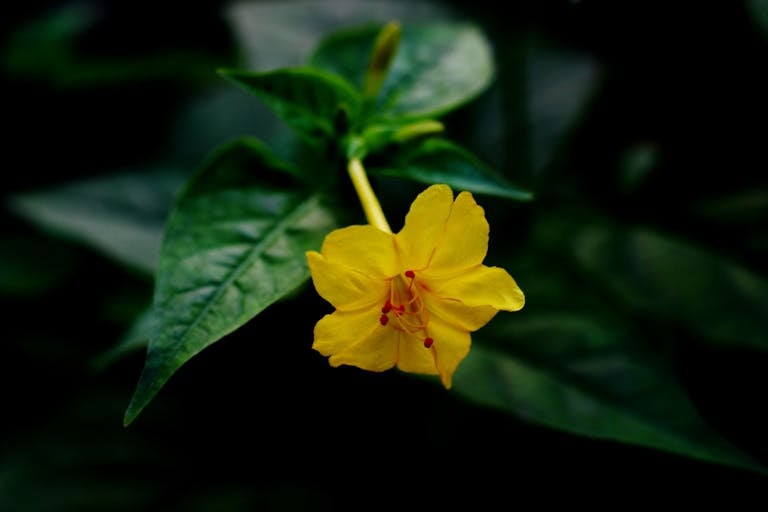The pictures we use in our articles might not show exactly what the words say. We choose these pictures to make you interested in reading more. The pictures work together with the words but don’t take their place. The words still tell you the important facts.
Helleborus, commonly known as the Christmas rose or Lenten rose, is a mesmerizing plant that never fails to capture attention with its delicate flowers and evergreen foliage. This perennial beauty belongs to the Ranunculaceae family and is native to Europe and Asia. Helleborus is not your ordinary garden plant; it has a rich history and numerous fascinating attributes that make it stand out in the plant kingdom.
Unveiling the Mysteries of Helleborus: 16 Astonishing Facts
The Helleborus Plant and Its Diverse Colors
One of the most remarkable aspects of Helleborus is its wide range of colors. These plants can produce flowers in shades of white, pink, red, purple, green, and even black. This variety allows for stunning displays in gardens and adds a touch of uniqueness to any landscape.
Blooming Beauty in Winter
Unlike many other flowering plants, Helleborus thrives in colder weather. Its ability to bloom during the winter months makes it a cherished plant among garden enthusiasts who want to add color and life to their gardens during the dreary winter season.
Toxicity Warnings
While Helleborus is admired for its beauty, it is important to note that it is toxic if ingested. The plant contains toxic compounds, including alkaloids, which can cause severe gastrointestinal issues if consumed. It is crucial to handle Helleborus with care and keep it out of reach of children and pets.
Rich History and Folklore
Helleborus has been mentioned throughout history and mythology for its medicinal properties and associations with magic and folklore. It was believed to have the power to ward off evil spirits and protect against witchcraft. Additionally, Helleborus was used in traditional medicine to treat various ailments.
Resilience Against Deer and Rabbits
In areas where deer and rabbits are prevalent, Helleborus is a great choice for gardens. These animals typically avoid eating Helleborus due to its toxic properties, making it a resilient and low-maintenance option for gardeners.
Thriving in Shade
One of the remarkable characteristics of Helleborus is its ability to thrive in shady or partially shaded areas. This makes it a versatile plant for those who have limited access to direct sunlight in their gardens or prefer to create a tranquil atmosphere under the shade of trees.
Longevity in Beauty
Helleborus is known for its longevity, with many plants living for decades. Once established, these plants require minimal care and can continue to bloom and grace gardens with their presence for many years.
Lasting Beauty of Flowers
When Helleborus blooms, its flowers have an impressive lifespan compared to other types of flowers. The flowers can last for several weeks, providing an extended period of beauty and enjoyment for gardeners and admirers alike.
Propagation Through Division
If you want to expand your Helleborus collection or share this stunning plant with others, propagation through division is a popular method. This involves separating the plant’s root system into smaller sections and replanting them in different areas of the garden.
Winter Weddings and Helleborus
Due to its winter blooming period and its symbolism of beauty even in the harshest of seasons, Helleborus is often incorporated into winter weddings. The flowers’ delicate appearance and wide range of colors make them an ideal choice for bridal bouquets and centerpieces.
Medicinal Uses
Helleborus has a long history of use in traditional medicine. It has been utilized to treat various ailments, such as digestive disorders, arthritis, and skin conditions. However, it is essential to consult with a healthcare professional before using Helleborus for medicinal purposes.
Attracting Pollinators
The enchanting flowers of Helleborus attract various pollinators, including bees and butterflies. By adding Helleborus to your garden, you can create a pollinator-friendly environment, supporting the ecosystem and aiding in the reproduction of other plants.
Drought-Tolerant Beauty
Helleborus has developed a natural resistance to drought conditions, making it an excellent choice for gardens in areas with limited water resources. Once established, these plants can withstand periods of dryness without sacrificing their beauty.
Unique Characteristics of Leaves
The leaves of Helleborus are distinct and often have an interesting texture. They are typically leathery, glossy, and evergreen, providing year-round interest in the garden and serving as an attractive backdrop for the colorful flowers.
Symbolism of Hope and Rebirth
In various cultures, Helleborus is associated with hope and rebirth. Its ability to bloom during the winter months symbolizes the triumph of life over adversity, making it a meaningful plant in gardens and a source of inspiration for many.
Embracing the Wonders of Helleborus
Helleborus, also known as the Christmas Rose or Lenten Rose, is a fascinating plant with a rich history and a variety of incredible characteristics. From its ability to bloom in the winter months to its medicinal qualities, Helleborus has captivated plant enthusiasts and gardeners around the world. Whether you’re looking to add a touch of beauty to your winter garden or explore the magical properties of this plant, Helleborus is sure to amaze and delight. So next time you come across a Helleborus, take a moment to appreciate its astonishing features and the wonders of nature it represents.
FAQs: Answering Your Questions About Helleborus
-
How can I grow Helleborus in my garden?
Helleborus is a hardy perennial that prefers well-drained soil and partial shade. It can be grown from seeds or purchased as young plants. Keep the soil moist but not waterlogged, and provide a layer of mulch during the winter months to protect the roots from frost. -
Can Helleborus tolerate cold temperatures?
Yes, Helleborus is known for its ability to endure cold temperatures. In fact, it often blooms during the winter months when many other plants are dormant. However, it’s important to provide some protection, such as mulch or a cover, during severe cold snaps. -
Are Helleborus flowers toxic?
Yes, all parts of the Helleborus plant are considered toxic if ingested. It contains compounds called cardiac glycosides, which can be harmful if consumed in large quantities. It’s important to keep pets and small children away from the plant and to exercise caution when handling it. -
Can Helleborus be used medicinally?
Yes, Helleborus has a long history of medicinal use. It has been used to treat various ailments, such as fevers, digestive issues, and skin conditions. However, it’s important to consult with a healthcare professional before using Helleborus for any medicinal purposes. -
Are there different varieties of Helleborus?
Yes, there are numerous species and varieties of Helleborus available. Some common ones include Helleborus niger, Helleborus orientalis, and Helleborus foetidus. Each variety has its own unique characteristics and flower colors, providing a wide range of options for gardeners and plant enthusiasts.
Helleborus, with its captivating beauty and intriguing qualities, continues to enchant gardeners and plant enthusiasts alike. Delve into the world of the Christmas Rose and Lenten Rose to uncover the timeless allure and hidden wonders that make this plant a true gem in the garden. Let the magic of Helleborus inspire you to embrace nature's gifts and celebrate the beauty of the winter season.
